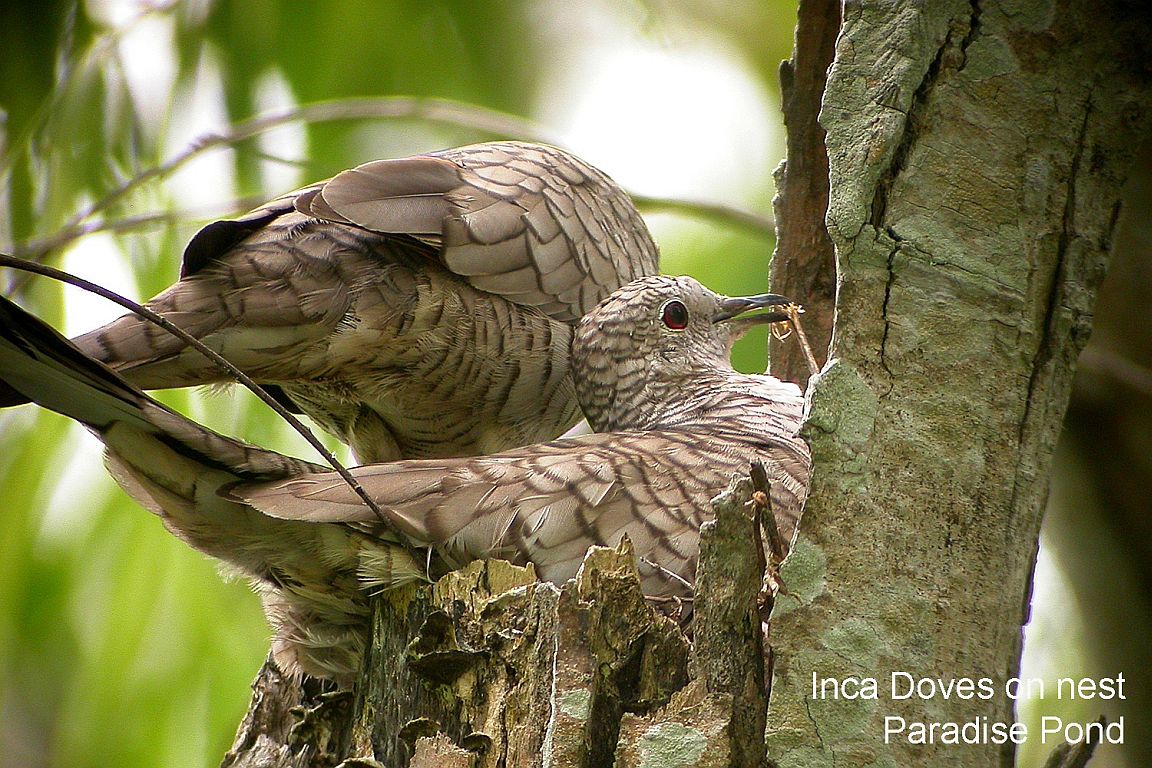Inca dove on:
[Wikipedia]
[Google]
[Amazon]
The Inca dove or Mexican dove (''Columbina inca'') is a small
 The Inca dove ranges from Costa Rica in the south to the American Southwest in the north and is often common to abundant in suitable habitat. Its range has been expanding northward and southward the past few decades.Kannan, R. J. L. Jackson, and E. Brooks. 2019. History and Current Status of the Inca Dove (Columbina inca) in Arkansas. J. Arkansas Academy of Science 73: 65-71., https://scholarworks.uark.edu/cgi/viewcontent.cgi?article=3343&context=jaas Despite being named after the
The Inca dove ranges from Costa Rica in the south to the American Southwest in the north and is often common to abundant in suitable habitat. Its range has been expanding northward and southward the past few decades.Kannan, R. J. L. Jackson, and E. Brooks. 2019. History and Current Status of the Inca Dove (Columbina inca) in Arkansas. J. Arkansas Academy of Science 73: 65-71., https://scholarworks.uark.edu/cgi/viewcontent.cgi?article=3343&context=jaas Despite being named after the
 During winter, Inca doves roost in communal huddles in a pyramid formation that aid in heat conservation. These pyramids can contain up to 12 birds. They often flock outside their territories, with flocks going up to 100 birds.
During winter, Inca doves roost in communal huddles in a pyramid formation that aid in heat conservation. These pyramids can contain up to 12 birds. They often flock outside their territories, with flocks going up to 100 birds.
Inca dove - ''Columbina inca''
- USGS Patuxent Bird Identification InfoCenter * * * * {{Taxonbar, from=Q680708 Columbina (genus), Inca dove Native birds of the Southwestern United States Birds of Central America Inca dove Inca dove
New World
The term ''New World'' is often used to mean the majority of Earth's Western Hemisphere, specifically the Americas."America." ''The Oxford Companion to the English Language'' (). McArthur, Tom, ed., 1992. New York: Oxford University Press, p. ...
dove
Columbidae () is a bird family consisting of doves and pigeons. It is the only family in the order Columbiformes. These are stout-bodied birds with short necks and short slender bills that in some species feature fleshy ceres. They primarily ...
. The species was first described by French surgeon and naturalist René Lesson in 1847. It reaches a length of and weighs . The Inca dove has an average wingspan of 28.5 cm and a max wingspan of 32 cm. It is a slender species, with a gray-brown body covered in feathers that resemble a scaled pattern. The tail is long and square and edged with white feathers that may flare out in flight. The underwings are reddish, like other ground doves, and upon takeoff, the wings produce a distinctive, quiet rattling noise.
Distribution and habitat
 The Inca dove ranges from Costa Rica in the south to the American Southwest in the north and is often common to abundant in suitable habitat. Its range has been expanding northward and southward the past few decades.Kannan, R. J. L. Jackson, and E. Brooks. 2019. History and Current Status of the Inca Dove (Columbina inca) in Arkansas. J. Arkansas Academy of Science 73: 65-71., https://scholarworks.uark.edu/cgi/viewcontent.cgi?article=3343&context=jaas Despite being named after the
The Inca dove ranges from Costa Rica in the south to the American Southwest in the north and is often common to abundant in suitable habitat. Its range has been expanding northward and southward the past few decades.Kannan, R. J. L. Jackson, and E. Brooks. 2019. History and Current Status of the Inca Dove (Columbina inca) in Arkansas. J. Arkansas Academy of Science 73: 65-71., https://scholarworks.uark.edu/cgi/viewcontent.cgi?article=3343&context=jaas Despite being named after the Inca Empire
The Inca Empire (also known as the Incan Empire and the Inka Empire), called ''Tawantinsuyu'' by its subjects, ( Quechua for the "Realm of the Four Parts", "four parts together" ) was the largest empire in pre-Columbian America. The adm ...
, this species does not occur in any of the lands that once constituted that empire. Inca doves are expanding their range in the north and south. This terrestrial species forms flocks in deserts, scrublands and cultivated areas and may also be found in urban settings where they feed upon grass seeds and take advantage of the ready availability of water from agricultural and suburban irrigation.
The Inca dove has escaped or been deliberately released in the US state of Florida
Florida is a state located in the Southeastern region of the United States. Florida is bordered to the west by the Gulf of Mexico, to the northwest by Alabama, to the north by Georgia, to the east by the Bahamas and Atlantic Ocean, and to ...
, but there is no evidence that the population is breeding and may only persist due to continuing releases or escapeNesting
Inca doves build their nests primarily in trees and shrubs. The average diameter is about 5 centimeters. The male gathers nesting material and presents it to the female, who also gathers some nesting material. The nest is composed of twigs, grass, weed stalks, and leaves and becomes reinforced with the brood's excrement. The nest is often used over and over, with one nest being reused 11 times.Behavior
 During winter, Inca doves roost in communal huddles in a pyramid formation that aid in heat conservation. These pyramids can contain up to 12 birds. They often flock outside their territories, with flocks going up to 100 birds.
During winter, Inca doves roost in communal huddles in a pyramid formation that aid in heat conservation. These pyramids can contain up to 12 birds. They often flock outside their territories, with flocks going up to 100 birds.
Voice
The song, a forceful cooing rendered variously as ''cowl-coo'' or ''POO-pup'', may be given from a tree, wire, or other open, high perch such as a television aerial.References
* * *External links
Inca dove - ''Columbina inca''
- USGS Patuxent Bird Identification InfoCenter * * * * {{Taxonbar, from=Q680708 Columbina (genus), Inca dove Native birds of the Southwestern United States Birds of Central America Inca dove Inca dove